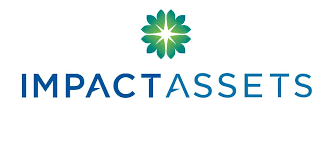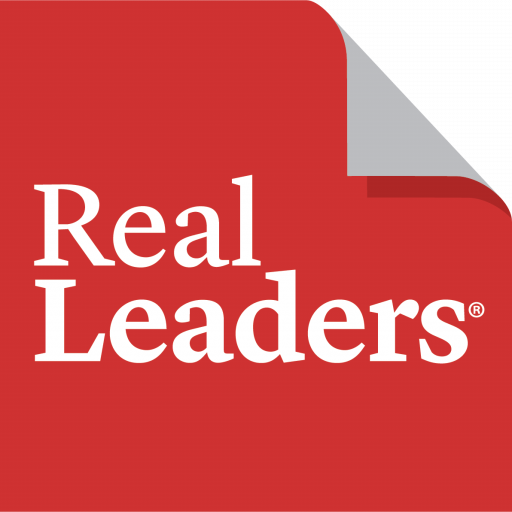 For Liesel Pritzker Simmons, there’s no shortcut to raising the bar on impact investment performance.
For Liesel Pritzker Simmons, there’s no shortcut to raising the bar on impact investment performance.
As Principal of Blue Haven Initiative, a family office she co-founded in 2012 with her husband Ian Simmons, this millennial is showing how investors of all ages can maximize the positive social and environmental impact of their investments while generating financial returns.
But it isn’t easy.
If you like this, subscribe here for more stories that Inspire The Future.
Whether it is analyzing a portfolio company prospectus or visiting entrepreneurs in sub-Saharan Africa, Pritzker Simmons applies a rigorous portfolio-management lens to every investment—whether for-profit or philanthropic capital—with the goal of aligning financial performance and public benefit. There’s no magic bullet or “Top 10” list for impact investing, says Pritzker Simmons. “It’s a highly personal endeavor, requiring people to think deeply about how portfolios should reflect their values and concerns.”
As one of the first family offices created with impact investing as its mission and focus, Pritzker Simmons and the Blue Haven team are careful to ensure that philanthropic efforts and investment efforts are coordinated and complementary. And they are playing the long game. Whether investing in a social enterprise, supporting research and education, or regularly reviewing its public equity portfolio, Pritzker Simmons, her husband and their advisors believe the future of investing will be reshaped by more informed investors.
We recently caught up with Pritzker Simmons. An excerpt of our interview follows:
Amy Bennett: Liesel, thanks again for your time. Let’s jump right in. How do you define impact investing?
At Blue Haven Initiative, we start from the premise that every investment has an impact—good, bad, social, environmental and financial. From there, we do extensive research and seek to maximize the positive social and environmental impact of our investments while earning a market return. As a result, impact investing requires us to ask a lot more questions and do more rigorous due diligence in assessing the long-term risks and returns of our investments.
We’re a family office and we take this approach because we’re long-term investors. If we don’t consider environmental and social risk and returns, we’re not only putting our financial investments at greater risk, we’re not being good stewards of wealth for future generations. We don’t want to make a mess our kids will eventually have to clean up.
How does your philanthropic giving fit into your impact investment strategy?
Blue Haven takes a Total Portfolio Management approach to impact investing. That means looking across asset classes and capital types. Our philanthropic capital is an important resource that we use as effectively as possible. We look for opportunities that markets really cannot address—civic engagement in voting, disaster relief, research and education—things that traditional investing typically doesn’t value as much as we think it should. We prioritize our philanthropic spending for those kinds of opportunities.
Philanthropy is one tool in the tool belt for impact and we use it for grants as well as concessionary investments where the impact equates to a non-risk-adjusted return. And it is part of a holistic process. We want to make sure that our investment portfolio is not working against our philanthropic goals. There is absolutely no point in funding climate change initiatives with your philanthropic dollars if you’re not trying to reduce your carbon footprint in your investment portfolio. It doesn’t make any sense.
We hear a lot about how donor advised funds are growing in popularity and democratizing philanthropy. And we know each other because you use ImpactAssets’ offering, the Giving Fund. How has it played a role in your impact investing?
The Giving Fund is the vehicle through which we do our philanthropic grant making and our concessionary investing. We want to spend time finding great organizations and companies to support without devoting a lot of time on the complexities of philanthropic administration. There’s really a great range of tools that impact investors use these days—from debt to equity, recoverable grants, C4 strategies—and ImpactAssets knows how to help us implement them.
In addition, the organization plays an important role in the impact investing ecosystem. Clients of ImpactAssets are among the most active impact investors in the world. It’s an innovative and risk-taking community and you can see that in the number of deals that are done and the kinds of funds that are on the platform. It’s inspiring to be a part of it.
Can you tell us about one of your favorite impact investments that you made through the Giving Fund?
One example is our support of PRIME Coalition, an intermediary that facilitates very early-stage investments into game-changing climate-change companies. They find companies, vet them, and structure early-stage investments into them. We’ve supported PRIME through an operating grant as well as providing funding that PRIME used to place equity into another venture. And we’ve also supported them by directly investing convertible debt into RedWave, a company that is developing technology to convert waste heat into renewable electricity.
Millennials are enthusiastic but often inexperienced when it comes to impact investing. What’s the most important lesson you have learned as a pioneering impact investor that you can pass along to your fellow millennials?
I’ve learned that you can’t expect that impact investing is going to be faster, easier or cheaper than traditional investing. It’s more complicated, idiosyncratic and rigorous. And that’s okay. If it were easy, everybody would have already done it. You have to put time and energy and effort into impact investing, but it’s where the most exciting conversations are happening. And I think millennials know that.
It’s also important for millennial investors to just get started with something and learn as they go. Don’t try to find perfection in one single investment or in one single fund. Don’t try to look for a website that rates every company perfectly and makes impact investing just a click away. Start small, piggyback off of investors that you think are smart, and learn that way.
If you could deliver one message to investors of any age, what would that message be?
I would appeal to investors to take more responsibility for the total impact of their investments. If an investment has a negative impact socially or environmentally, somebody is going to have to clean up that mess. If not you today, then your grandchildren tomorrow.
Get into the mindset of long-termism because a thoughtful and rigorous consideration of the environmental and social impact of your investments in the long run is just more informed investing.
And if you believe that a better understanding of risk is smart in the long term, then you’re more than halfway to being an impact investor.
If you like this, subscribe here for more stories that Inspire The Future.




































